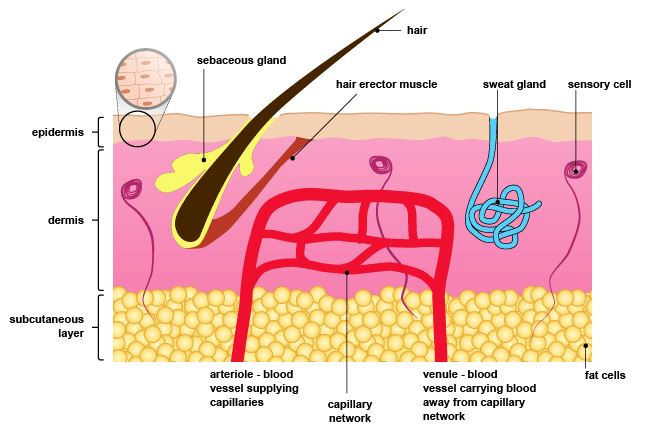This topic takes on average 55 minutes to read.
There are a number of interactive features in this resource:
 Biology
Biology
 Human biology
Human biology
 Physical education
Physical education
The skin is a very important organ. It is a waterproof barrier over the surface of your body, it keeps out infection, it protects the delicate tissues underneath and it can repair itself if it is damaged.
In homeostasis, the skin plays a very important part in maintaining the body temperature within narrow limits. It is important both for losing heat when your core temperature goes up and for conserving heat if your core temperature starts to fall. The structure of the skin is very well adapted to its function in temperature control.
The skin has three main layers - the epidermis, the dermis and the subcutaneous layer.
The epidermis is on the outside. This has a basal layer which is always forming new cells through cell division so the epidermis is made up from layers of cells. The new cells gradually move towards the surface, which takes 1-2 months. As they move up they gradually die, become flattened and develop keratin. The outermost layer of the epidermis is made of flat dead cells which are continually worn away by friction. The keratin and oil from the sebaceous glands help to make the skin waterproof.
The dermis is the middle layer. It contains
The subcutaneous layer is the final layer of the skin. This is a layer of fat found in the lower part of the dermis and underneath it. The thickness of this layer varies depending on the place in the body and from person to person. A store of fat is useful to the body as insulation and it can be used for energy when the intake of nutrients is insufficient.

A simple section through the skin